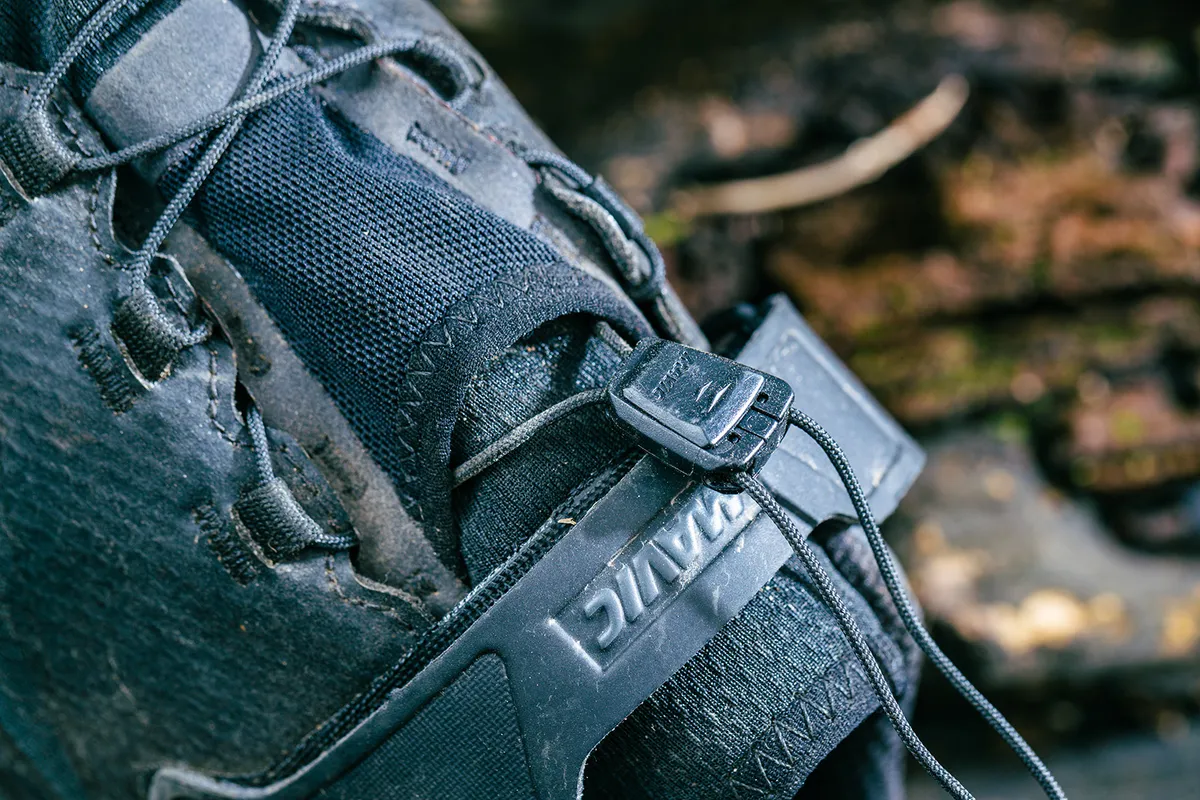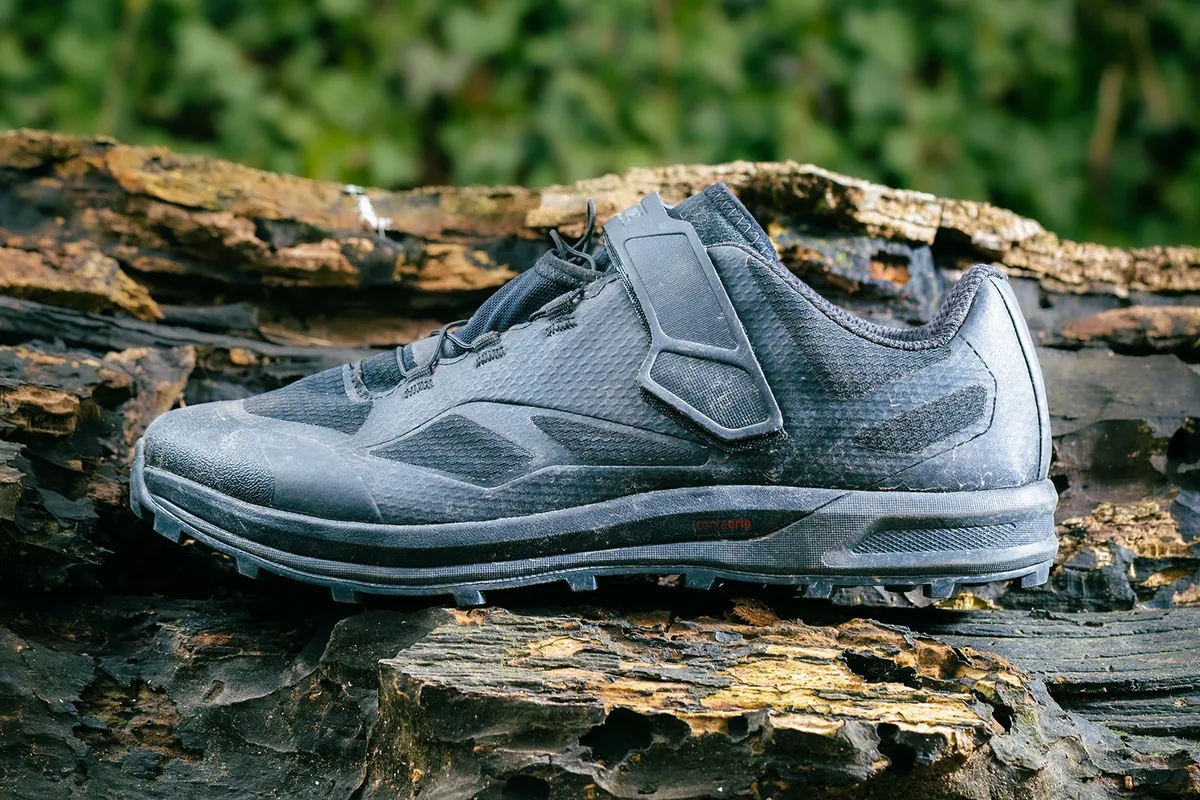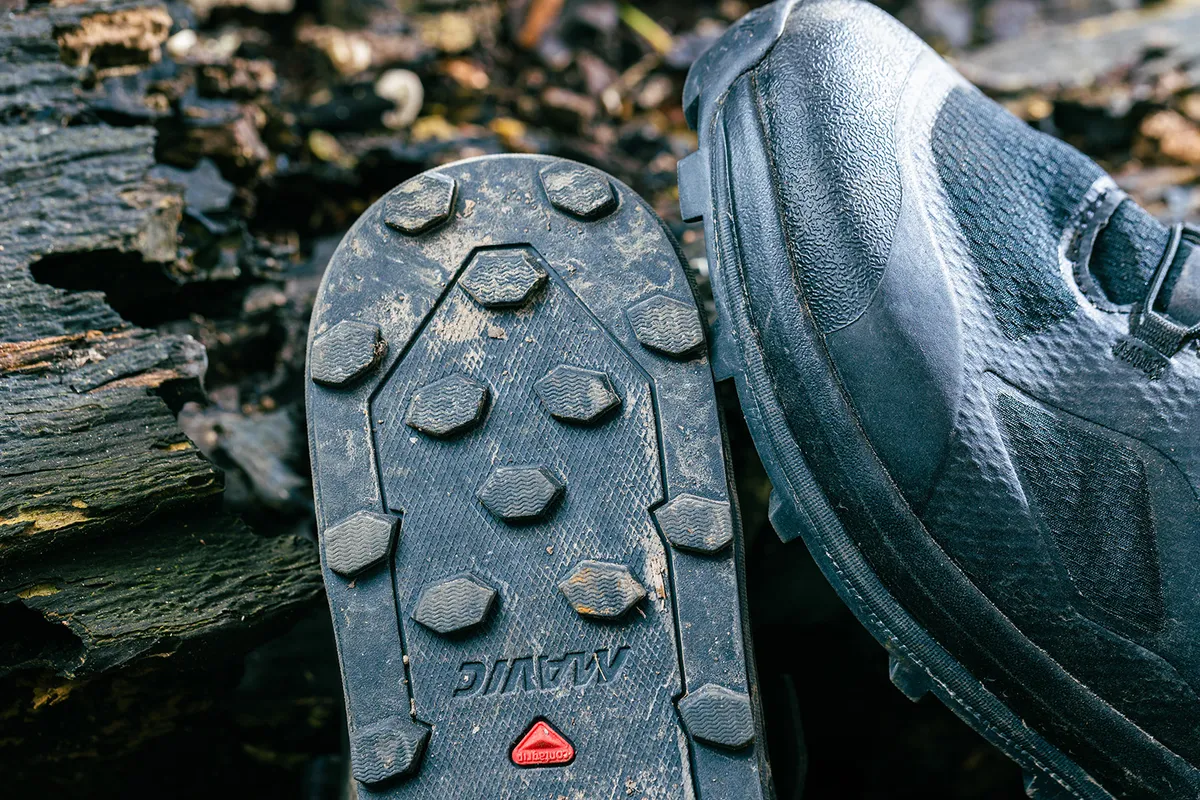Mavic's lightweight trail shoe has a very adventurous demeanour that will make it a big hit with riders of a similar disposition.
It has a lightweight upper, ‘speedlace’ system and a tread that looks ideal for scrambling up and down rocky, muddy hillsides.
The upper's lightweight material also contributes towards this being one of the lightest trail shoes around, at 734g on our scales for the pair.
Mavic XA Elite II specifications and details
The material is thermally bonded together, reducing the need for seams – claimed to be a more reliable way of joining two pieces of material. It cuts weight and means there are fewer internal ridges and bumps, which boosts comfort.
The fabric doesn't feature obvious ventilation perforations, though it is very thin, especially over the toes and in certain areas around the side of the foot.
Elsewhere, the upper's material is a touch thicker, and potentially more abrasion-resistant, while there are also further reinforcements around the toe and heel.

Mavic uses a speedlace system, backed up with a Velcro strap. The thin lace is held in tension by a plastic gripper, and is partially routed underneath the mesh lace pocket that sits on top of the tongue.
The position of the lace's pocket means the Velcro strap doesn't tighten over the plastic gripper, something which may otherwise contribute towards discomfort.
Internally, the fit is snug but not tight, especially around the middle of the foot. At the same time, the toe box is fairly generous in volume.
The ankle opening has reasonable levels of padding, but not so much as to add unnecessary weight or bulk.
The Endofit tongue is designed to hug the foot in the right places – it has stretchy wings that extend past the side of the foot and into the shoe's footbed. Mavic's Ortholite insole provides good arch support.
The sole has an aggressive, wide-spaced and deep tread, constructed from Contagrip rubber. It's almost like a trail-running shoe in its design.

The cleat channel is 38mm long, which is longer than many, and it extends far back towards the middle of the shoe. It's also longer than it was on the previous-generation XA Elite, something I commented on when reviewing those shoes.
A rubber cover is included, making the shoe more compatible with flat pedals. Ramps at either end of the cleat bed are there to aid pedal entry.
Mavic offers the shoe in an impressively broad range of sizes.
Mavic XA Elite II performance

These are some of the best-constructed shoes we've tested – at least from the outside. The materials are high-quality, with minimal seams, no gaps between material and sole, and some nicely thought-out features.
Though lightweight, the upper offers reasonably good support laterally for your foot – they don't feel vague and wallowy, though some other shoes provide a marginally more locked-in feel.
The Velcro strap helps with heel hold – there's a little lift when walking, but never enough to contribute towards blisters, and none when pedalling. The cut-out shape at the top of the strap prevents its fairly high position from digging into your ankle, too.
The 'speedlace' isn't as good as that found on the Crankbrothers Mallet in my opinion. The heatshrink pull-tab doesn't feel as premium in use and the gripper isn't quite as smooth or refined in comparison.
I also found that the tongue bunches when the 'speedlace' is pulled tight, especially at the lower portion of the shoe. This leads to some creasing along the length of the tongue, which feels odd.
Though I don't have the largest-volume feet, it's not something I've experienced with other shoes, so trying them on for volume would be worthwhile.
Furthermore, this bunching makes the lace pocket hard to access, and given how long the laces are, the pocket is a useful aspect of the shoe's design.

The upper's extensive mesh panelling contributes to the low overall weight, and excellent ventilation and drying ability.
The Elite II doesn't hold much water compared to some shoes with thicker padding, but I did notice that the insole soaks up much more water than others – 50g when measured.
As such, the bulk of the shoe dries fast, but the insole takes a long time – remove it for faster drying.
The insole itself doesn't provide a huge amount of foot support, with a neutral shape. It's not uncomfortable, but it doesn't feel as if a lot of the purchase price has gone towards it.
The sole of the shoe will appeal to the more adventurous rider. It's different to many other trail shoes, in that it has widely spaced, moderately deep spiky tread blocks that dig well into mud and grit, offering excellent grip if you're out on an adventure or exploring.

Combined with the shoe's low weight, and if you are keen on long alpine hike-a-bikes, these may be the shoes for you.
The sole isn't the stiffest out there, so we'd recommend using them with a platform pedal, such as the Shimano Trail, to get the best out of them on long rides – without this, flex in the sole robs a few watts.
Mavic XA Elite II bottom line
Were I to head to the Alps for an adventure with questionable ridability, these shoes would be towards the top of my list (along with Shimano's ME7s).
They're lightweight, which feels great on the foot, they dry quickly (so long as the insole is removed and wrung out), and are low in bulk.
I'm not convinced by the 'speedlace' and the bunching of the tongue, though, and would like a more supportive insole. They aren't the best when it comes to pedalling efficiency, either.
As such, they feel really well suited to a dedicated group of adventurous riders, but maybe aren't the best for your average trail rider.
How we tested:
Mountain bike shoes have a hard life. All your power is transferred through their soles, as well as an awful lot of bodily bike control.
At the same time, they’re stamped onto pedals (some of which have platform cages with sharp pins), are walked in on rough surfaces, have to sit in the firing line of mud and water, and shrug off impacts with trailside rocks, roots and vegetation.
As such, the best mountain bike shoes have to satisfy a wide range of requirements to reach the top of our table. In this group test, we pitted 12 pairs of clipless shoes from leading brands against each other during several months of sloppy winter testing.
We tested all these shoes with both Crankbrothers and Shimano SPD pedals to check that they’re compatible with the most common platforms. They were ridden with one foot in one brand of shoe and the other in a different type, to better grasp their differences.
Steep banks were scrambled up and down, while we carried our bikes on our shoulders to see how much our heels slipped in the heel box and our feet slipped in the mud. We even sprayed them with a hose to see how water-resistant they are, then timed how long they take to dry out.
Other shoes we tested:
- Bontrager Rally review
- Crankbrothers Mallet Speedlace
- Endura MT500 Burner Clipless review
- Five Ten Kestrel Lace review
- Fizik Gravita Versor Clip review
- Giro Berm Cover review
- Ion Rascal Select BOA review
- Leatt 6.0 Clip V22 review
- Ride Concepts Transition review
- Scott Crus-R review
- Shimano AM5 review
- Specialized 2FO Roost Clip review
Product
| Brand | mavic |
| Price | 120.00 EUR,120.00 GBP |
| Weight | 734.0000, GRAM (44) - for pair as tested |
Features
| Closure | laces |
| Sole | Contagrip® |
| Features | Sizes: Sizes: 36 - 48⅔ Midsole: EVA Upper: OrthoLite® |
